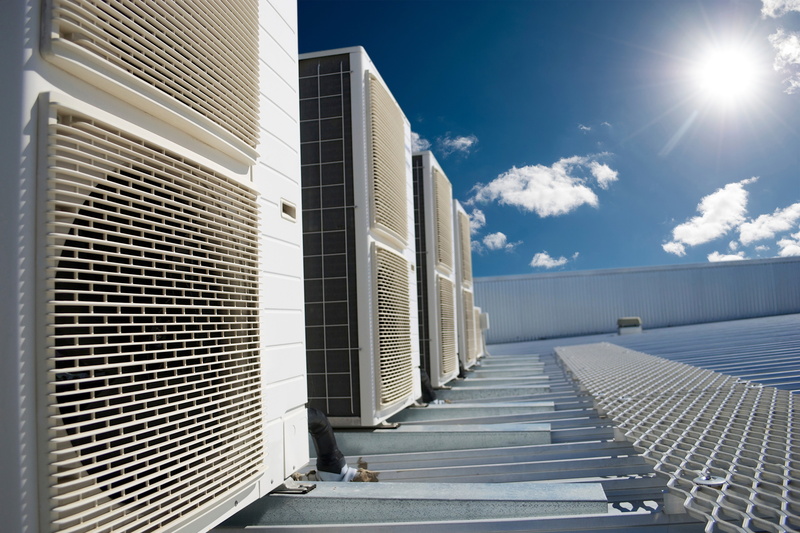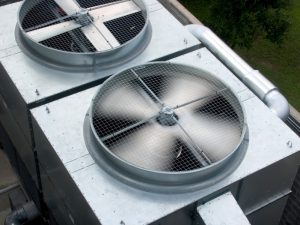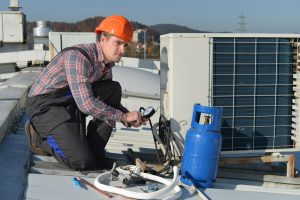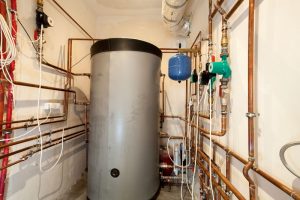 We’ve experienced a hot summer here in Toronto, and we can expect the temperatures to remain high for the foreseeable future. These conditions place a huge workload on any type of cooling system—but especially for the air conditioning system for a commercial or industrial facility. An air conditioner is not only doing the work of cooling off personnel, clients, and customers in a facility, it also must manage climate control to protect equipment and process. This is one of the reasons commercial and industrial ACs are more complex than residential air conditioning: a commercial AC handles multiple jobs, and the risk of a loss of cooling puts more in jeopardy than just stopping people indoors from sweating.
We’ve experienced a hot summer here in Toronto, and we can expect the temperatures to remain high for the foreseeable future. These conditions place a huge workload on any type of cooling system—but especially for the air conditioning system for a commercial or industrial facility. An air conditioner is not only doing the work of cooling off personnel, clients, and customers in a facility, it also must manage climate control to protect equipment and process. This is one of the reasons commercial and industrial ACs are more complex than residential air conditioning: a commercial AC handles multiple jobs, and the risk of a loss of cooling puts more in jeopardy than just stopping people indoors from sweating.
But what happens when all this summertime pressure overwhelms an AC, and suddenly you’ve not only got sweat but the threat of failing equipment and an operational shutdown?

 Unless your business is related to the HVAC industry, you probably don’t have much more than a standard working knowledge of commercial heating and cooling systems. Nor do you need to have one—that’s why you have professionals like us around to assist you. So if you’ve ever wondered why rooftop AC equipment is the standard for businesses, we’ve written the post to answer that question and give you some information about how our side of the HVAC industry works.
Unless your business is related to the HVAC industry, you probably don’t have much more than a standard working knowledge of commercial heating and cooling systems. Nor do you need to have one—that’s why you have professionals like us around to assist you. So if you’ve ever wondered why rooftop AC equipment is the standard for businesses, we’ve written the post to answer that question and give you some information about how our side of the HVAC industry works.  The standard way of providing climate control inside most commercial facilities is with the air-source heat pump. You’re most likely familiar with these as the rooftop units found on commercial buildings. They work through refrigeration circulation to move heat either into or out of a facility space. The reason they’re called “air-source” heat pumps is because the use the air both indoors and outdoors for heat transfer.
The standard way of providing climate control inside most commercial facilities is with the air-source heat pump. You’re most likely familiar with these as the rooftop units found on commercial buildings. They work through refrigeration circulation to move heat either into or out of a facility space. The reason they’re called “air-source” heat pumps is because the use the air both indoors and outdoors for heat transfer. Running a business of any kind involves making numerous decisions both large and small on a daily basis. Making a choice to upgrade or replace a large part of a facility’s air conditioning system definitely falls in the “large” category: most commercial facilities need cooling of some type in order for them to operate. Cooling can be necessary to protect equipment (such as in vital server room cooling), facilitate process, and provide comfort to employees, clients, tenants, etc. Failure of the air conditioning equipment or ineffective/inefficient performance will have a major negative impact on running your business.
Running a business of any kind involves making numerous decisions both large and small on a daily basis. Making a choice to upgrade or replace a large part of a facility’s air conditioning system definitely falls in the “large” category: most commercial facilities need cooling of some type in order for them to operate. Cooling can be necessary to protect equipment (such as in vital server room cooling), facilitate process, and provide comfort to employees, clients, tenants, etc. Failure of the air conditioning equipment or ineffective/inefficient performance will have a major negative impact on running your business. If you are looking for an
If you are looking for an  The water heater is a universal appliance found in buildings from modest one-bedroom homes to sprawling industrial facilities. If you operate an industrial business in the Greater Toronto Area, water heaters are probably an essential part of your day-to-day operations.
The water heater is a universal appliance found in buildings from modest one-bedroom homes to sprawling industrial facilities. If you operate an industrial business in the Greater Toronto Area, water heaters are probably an essential part of your day-to-day operations. The winters in Toronto are always tough, and if you run a commercial or industrial facility your main concern during the season is with heating. The HVAC systems that create the environment necessary for your facility to thrive, from delivering comfort for people to protecting equipment from damage, must remain in top shape so your company also remains in top shape.
The winters in Toronto are always tough, and if you run a commercial or industrial facility your main concern during the season is with heating. The HVAC systems that create the environment necessary for your facility to thrive, from delivering comfort for people to protecting equipment from damage, must remain in top shape so your company also remains in top shape. It wasn’t long ago that the concept of a computer automated home or business was reserved for science-fiction stories and special displays at futurist exhibits. However, the technology for building automation has not only arrived, but it continues to improve, allowing for advancements in everything from energy management to basic comfort, convenience, and efficiency throughout a building. Let’s look at some of the ways building automation can make a difference to a commercial/industrial building.
It wasn’t long ago that the concept of a computer automated home or business was reserved for science-fiction stories and special displays at futurist exhibits. However, the technology for building automation has not only arrived, but it continues to improve, allowing for advancements in everything from energy management to basic comfort, convenience, and efficiency throughout a building. Let’s look at some of the ways building automation can make a difference to a commercial/industrial building.  Boilers and cooling towers are expected for many commercial and industrial buildings. But they aren’t the only ways to provide proper environmental controls throughout the year. Commercial geothermal systems are types of powerful heat pumps that rely on the thermal energy drawn from the ground to deliver comfort to a facility or business. The heat pump either draws thermal energy from the ground to provide heat, or it changes direction to use the ground as a heat sink where it can deposit thermal energy removed from the building.
Boilers and cooling towers are expected for many commercial and industrial buildings. But they aren’t the only ways to provide proper environmental controls throughout the year. Commercial geothermal systems are types of powerful heat pumps that rely on the thermal energy drawn from the ground to deliver comfort to a facility or business. The heat pump either draws thermal energy from the ground to provide heat, or it changes direction to use the ground as a heat sink where it can deposit thermal energy removed from the building.